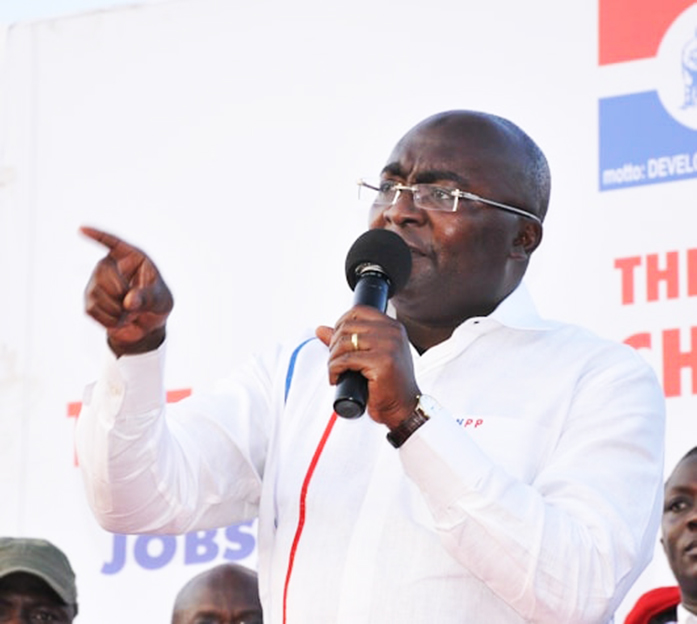The next government of the New Patriotic Party (NPP), led by Dr. Mahamudu Bawumia, should Ghanaians vote for him, intends to cap the size of Parliament. This is contained in the 2024 manifesto of the NPP to help operate a lean government.
According to the manifesto, relevant acts and regulations will be amended to separate the creation of districts from constituencies, as is the case at the moment.
“We will amend the relevant Acts and regulations to delink the creation of districts from constituencies, to end the automatic increases in the size of Parliament, following the creation of new districts,” the manifesto states.
DOWNSIZE
The current number of constituencies in the 8th parliament of the 4th Republic is 275 and is expected to increase to 276 in the next parliament, as a result of the creation of the Guan constituency in the Oti Region.
The burden on taxpayers to pay for the growing number of Legislators and Parliament House staff has been of concern to citizens, hence the NPP’s promise to cap the legislature.
According to the manifesto, a Bawumia-led government will also, among others, merge and consolidate entities, programmes and funds to better administer the country.
“To achieve this objective, we will cap ministerial appointments to 50 and commit to working with not more than 50 ministers of state,” the manifesto said.
CREATION OF CONSTITUENCY
The 1992 constitution, under Article 47, mandates that Ghana be divided into constituencies for the purpose of electing Members of Parliament. It specifies that the number of constituencies should not be less than 140.
The constitution also gives the Electoral Commission the power to review and demarcate constituencies.
The EC may create new constituencies based on changes in population, shifts in administrative boundaries, or other factors such as geographical size, ease of communication, and administrative convenience in addition to population size.
Clause 5 of Article 47 says, “The Electoral Commission shall review the division of Ghana into constituencies at intervals of not less than seven years, or within twelve months after the publication of the enumeration figures after the holding of a census of the population of Ghana, whichever is earlier, and may, as a result, alter the constituencies.”
HISTORY
The first constituencies in Ghana were created for the 1951 Legislative Assembly elections, held under the British colonial government’s new 1950 constitution. At that time, the Gold Coast was divided into 38 constituencies, allowing people of the Gold Coast to elect members to the Legislative Assembly.
In 1954, the number of constituencies was increased to 104, as part of a broader process of expanding representation as the Gold Coast moved closer to independence.
The number increased to 198 in 1965, but was reduced to 104 after the military coup in 1966, which overthrew Kwame Nkrumah.
In 1979, under the third Republic, the number was set at 140 and when Ghana returned to constitutional rule under the fourth Republic in 1992, the constituencies increased to 200 for the general elections.
In 2000, the number increased to 230 by the Electoral Commission, based on population growth and the 2000 census, which allowed the EC to review and demarcate for the creation of new constituencies.
Ahead of the 2012 elections, 45 new constituencies were created, increasing the number to 275, following the 2010 population census.
Since 2012, Ghana has had two parliaments with the same 275 constituencies, but that will change after the December 2024 elections.
The creation of the Oti Region by the Akufo-Addo government necessitated the creation of new districts, which eventually birthed the Guan constituency, bringing the number to 276.
There is no single fixed population size for a constituency in Ghana, but the population quota serves as a guideline to ensure that constituencies have roughly equal populations.
Other factors are fair political representation, resource allocation and geographical size, ease of communication, economic viability and administrative convenience.
CREATION OF MDA
The first district in Ghana was created in 1959 under the Local Government Ordinance passed by the colonial government in 1951.
However, the major restructuring of the local government system happened under the Provisional National Defence Council (PNDC) government in 1988, when the Local Government Law (PNDCL 207) was introduced.
The law decentralised governance, dividing the country into metropolitan, municipal, and district assemblies. Meanwhile, going into the 2024 general election, the NPP has promised to cap the size of Parliament by delinking the creation of constituencies from the creation of districts.









